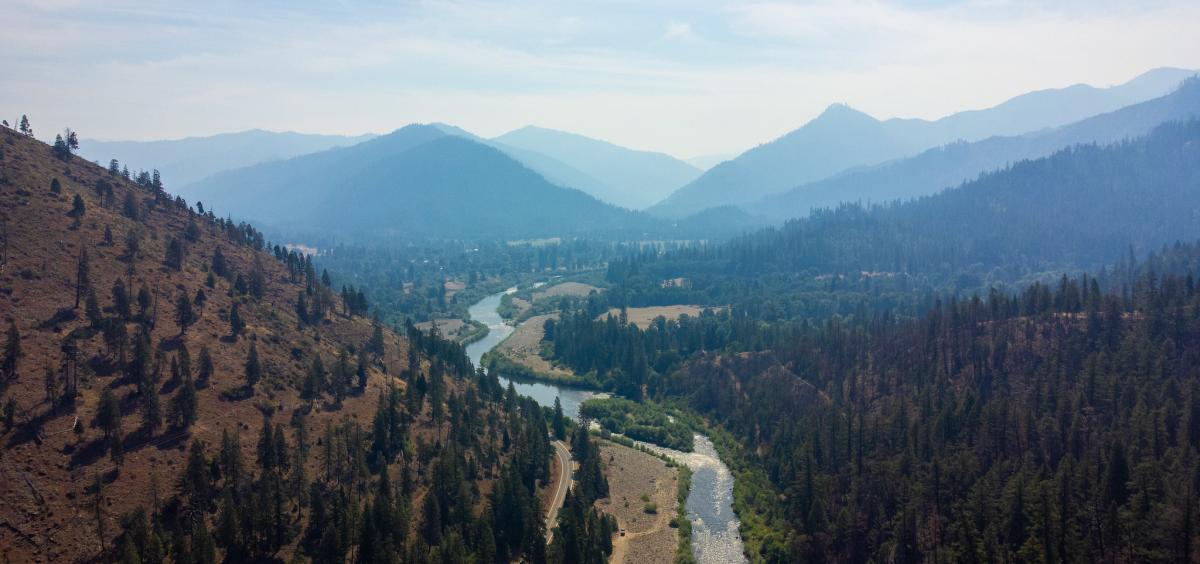
CORVALLIS, Ore. – The world’s largest dam removal and restoration project currently underway on the Klamath River in Oregon and California will aid salmon populations that have been devastated by disease and other factors. However, it will not fully alleviate challenges faced by the species, a team of researchers conclude in a just-published paper.
“The dam removals will likely go a long way towards restoring balance in the river,” said Sascha Hallett, a fish parasitologist at Oregon State University who has studied the river for two decades. “Certainly under certain circumstances there are going to be disease outbreaks, like with people and pathogens. But we envision that they are not going to be as large and not going to be as frequent as we have observed in the past.”
Michael Belchik, a fisheries biologist with the Yurok Tribe in California and co-author of the paper, said he thinks there will be noticeable gains for fish shortly after the dams are removed.
“I think you are going to see fish accessing new habitat right away, and that is going to be a cause for celebration,” said Belchik, who has worked for the Tribe since 1995.
In the paper, published in Frontiers in Ecology and Evolution, Hallett and a team of researchers from Oregon State, Tribes in Oregon and California, and state and federal agencies outlined their predictions for salmon disease risk in the Klamath River following the removal of four hydroelectric dams. They also provide post-dam removal research and monitoring recommendations and insights to aid habitat restoration efforts.
One of the four dams was removed earlier this year, and the other three are slated to be taken down in early 2024. Removal of the dams will result in restoration of habitat originally altered more than 100 years ago with construction of the first dam.
The Klamath River runs more than 250 miles from Oregon's high desert interior through the Cascade Mountains before entering the Pacific Ocean in northern California. It has broad ecological, cultural, recreational and economic relevance. The river was once the third largest salmon-producing river on the West Coast. Those salmon served as the foundation of life and culture for Tribes living along the river.
Construction of the dams in the early-to-mid-20th century blocked access for salmon and other fish species to hundreds of miles of habitat and created barriers that led to increases in pathogens deadly to the fish.
This dynamic received widespread attention in 2002 when there was a die-off of tens of thousands of chinook salmon in the Klamath River. Shortly after this event, Jerri Bartholomew, an Oregon State microbiologist who works with Hallett, started studying the Klamath River salmon.
Salmon health is impacted by many factors, including stream-flow levels, water temperature and pathogens. Barthlomew and her colleagues focus on the pathogens.
They have spent the past 20 years unraveling how a parasite known as Ceratonova shasta works in conjunction with an aquatic worm host, Manayunkia occidentalis, which is smaller than an eyelash, to create conditions in the Klamath River that are deadly to salmon.
In the paper, researchers say that increased habitat availability and longer fish migration routes created by dam removals will increase duration of pathogen exposure. However, restoration of the river’s natural flow will decrease fish disease risk by essentially flushing out the pathogens and unclogging a pathogen hot spot that has formed below the Iron Gate Dam, about five miles south of the California-Oregon border just east of Interstate 5. The dam is slated for removal in early 2024.
“There’s no question in my mind just the removal of these four dams will go a long way to knocking back that current infection zone by shifting things in terms of time and space where the hosts and parasites overlap,” said Julie Alexander, an aquatic ecologist who works with Hallett and Barthlomew.
She also cautioned that restoration efforts that will occur after dam removal need to be conducted thoughtfully.
"You don't want to go and restore a section of river to encourage salmon to spawn somewhere we know there are worms because then you are going to create a hot spot," Alexander said.
In addition to co-authors from the Yurok Tribe, authors of the paper include scientists at the Hoopa, Klamath and Karuk Tribes, Oregon Department of Fish and Wildlife, U.S. Fish and Wildlife Service and the National Oceanic and Atmospheric Administration.
The ongoing research by Oregon State and its partners has been supported by the U.S. Bureau of Reclamation. That includes a $4.5 million award earlier this year.
“Without this funding and without these groups contributing different pieces of the datasets, we would not have been poised at this time to capture that and be able to make predictions,” Hallett said. “Those two things are really important going forward to be able to inform short-term and long-term management actions as well as being able to inform ‘Was this major environmental change event successful?’”
About the OSU College of Science: As one of the largest academic units at OSU, the College of Science has seven departments and 12 pre-professional programs. It provides the basic science courses essential to the education of every OSU student, builds future leaders in science, and its faculty are international leaders in scientific research.
Sean Nealon, 541-737-0787, [email protected]
Sascha Hallett, [email protected]; Julie Alexander, [email protected]
Click photos to see a full-size version. Right click and save image to download.